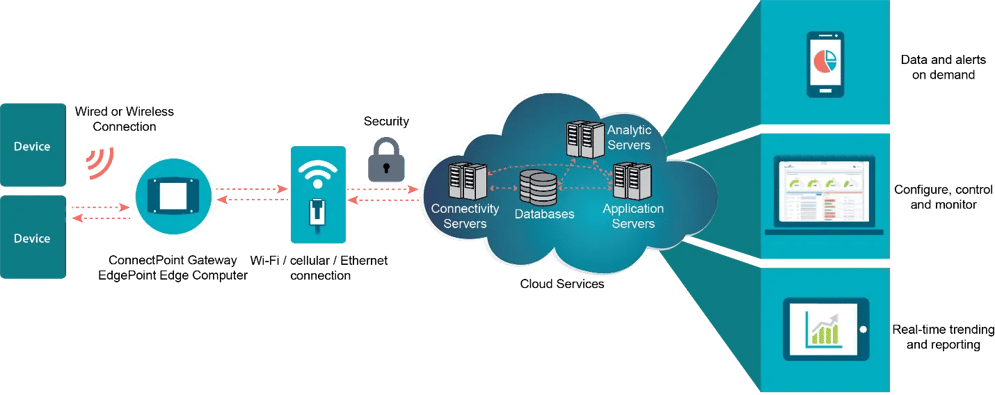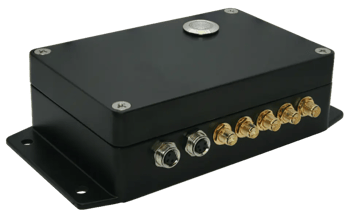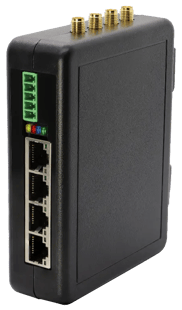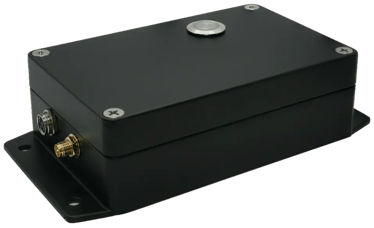NEW: AMC Edge SoM, EP-200Q
Enabled by Qualcomm Dragonwing QCS6490 delivering always-on connectivity for edge AI.

Enabled by Qualcomm Dragonwing QCS6490 delivering always-on connectivity for edge AI.

The ChallengeNexcomm Systems designs cellular gateways and sensor hubs for industrial and outdoor applications as well as heavy vehicles and work trucks. But these environments present several challenges for using traditional wireless technologies including requirements for longer signal ranges, higher data throughput, increased security, and easy setup and installation and there are often issues with signal penetration in these areas. The SolutionTo address the challenges of using wireless communications in an industrial setting, Nexcomm Systems added Silex Technology’s SX-NEWAH 802.11ah module – the industry’s first 802.11ah Wi-Fi solution for Internet of Things (IoT) device – into several of its products. Compared with other LPWA technologies using the 900MHz band, Wi-Fi HaLow provides higher data throughput for secure connectivity of smart devices over long distances while using minimal power. |
Nexcomm Systems develops solutions for connecting IoT devices to the cloud for monitoring and control. The company has a lot of experience in this industry as it has been providing cellular-based systems into industrial and heavy vehicle applications for more than 20 years. Based on their decades of experience, they understand the unique needs of these markets and have created sensor hubs, gateways, and a cloud platform to meet these needs.
More specifically, the sensor hubs used in their devices include the most common sensor electrical interfaces so that just about any sensor can be connected without the need for special hardware or software development. Sensor data is sent to the cloud through a cellular link, and from there, the data can be stored and analyzed on Nexcomm’s cloud services or a customer’s cloud service as shown in Figure 1.

Figure 1. A diagram showing how communication works between IIoT sensors and the end devices where the data is consumed.
Since Nexcomm System’s solutions are used in industrial settings, the sensor hubs and gateways must be rugged and designed to withstand voltage surges, reverse voltage, and electrostatic discharge (ESD). Therefore, their devices come in watertight enclosures with waterproof connectors or cord grips so they can be deployed in harsh, dirty industrial settings as well as in heavy equipment and work trucks.
Beyond these general environmental challenges, operating in these industrial environments also presents several challenges for connectivity that are not present in many other markets. Traditionally, many industrial controllers and equipment are designed to use wired technologies that have been around for years including RS-485 and CAN bus, and more recently, industrial Ethernet. However, running cable in these environments is expensive and, in many cases, simply not possible since it would involve running thousands of feet of cable around rotating equipment or in areas where heavy trucks are driving. Therefore, a wireless solution must be used.
But using Wi-Fi comes with its own set of challenges that make using traditional 2.4GHz and 5GHz wireless technology difficult in this environment as well. Let’s examine six of the key challenges Nexcomm Systems was facing when developing its connectivity solutions and how they overcame each of those challenges using newer Wi-Fi HaLow technology as opposed to traditional Wi-Fi solutions.
The range of traditional wireless technologies is typically around several hundred feet. While this range can be expanded to a couple thousand feet using high gain antennas and signal amplifiers, many industrial facilities have large campuses with many buildings and landfills and mines can cover hundreds of acres. By using the 900MHz band, Wi-Fi HaLow can achieve 2.5 times the range of 2.4GHz technologies, allowing the system to cover much more area without adding in additional hardware, which can be costly.
Industrial locations are not friendly environments for radio signals to operate in. Walls, vehicles, and lots of metal structures block radio signals and limit their effectiveness. By operating in the 900MHz band, Wi-Fi HaLow punches through obstructions much better than 2.4GHz technologies, making HaLow a much better solution for incorporating Wi-Fi around machinery.
Most wireless technologies on the market have a very specific view of IoT applications. They cater to sensor applications that send small amounts of data infrequently while running on a small battery. For example, Bluetooth Low Energy (BLE) devices have a goal of operating on a 2032-coin cell battery for five years, which means they typically transmit data at much slower rates, generally below 500kbps. With billions of devices in the world that fall into this category, it is a very valid use case, but it leaves behind many other applications such as high-end vibration monitors on rotating equipment, which can generate 2Mb of data over a 10 second run. Large motors can have as many as five sensors each. Several motors are typically in close proximity and readings can be taken every 15 to 20 minutes. This produces more data than a traditional technology can support in an environment where 2.4GHz radios struggle to get signals through. Wi-Fi HaLow solves the problem by offering high data throughput in a band that has much better penetration in these environments.Challenge 4: Security
Security is a big part of any discussion in industrial monitoring, especially when control is involved. Wi-Fi HaLow includes industry-standard best practices for encryption, authentication, and integration. Additionally, since Wi-Fi HaLow is new technology, users do not need to worry about backward compatibility with older less secure products that use WPA2 since Wi-Fi HaLow uses only the latest security standard, WPA3, defined by Wi-Fi alliance.
A lesser-known issue industrial sites are facing is that many companies are restricting the number, types, and frequency bands of the wireless equipment deployed at their facilities. Since 2.4GHz is a global unlicensed band, a variety of systems operate in this spectrum – from walkie-talkies to alarms to control systems. Many companies are experiencing interference between different systems and are now mapping what systems can operate at which frequencies. They are giving priority to critical systems and everything else must accommodate those systems by moving to unused frequencies in the band. If it can’t accommodate the critical systems, it can’t be used in their facility. Some facilities have even prohibited traditional Wi-Fi on their properties. Since Wi-Fi HaLow uses the 900MHz band, devices using Wi-Fi HaLow will not have any issues co-existing with critical 2.4GHz infrastructure.
When taking a new technology to a customer, there is always concern about how it will work. It was not that long ago when proprietary technologies ruled the market and every company did its own thing. HaLow was developed by the Wi-Fi Alliance and includes all the features that have made Wi-Fi the most successful wireless technology in the world. This immediately provides a level of comfort with the technology without having to work to convince the customer that it does what you claim.
To address the challenges discussed above with Wi-Fi HaLow, Nexcomm Systems integrated the Silex Technology SX-NEWAH module, which is the industry’s first IEEE 802.11ah Wi-Fi module that operates in the Sub 1GHz license-exempt ban, into some of its industrial communication products.
 |
 |
 |
|
The Nexus Industrial edge computer with cellular gateway communicates to IoT devices using Wi-Fi HaLow, Bluetooth, and other technologies, and provides an Internet connection through a CAT-1 cellular modem. It is a rugged product with an IP68 diecast aluminum enclosure for use in industrial applications as shown in in Figure 2. For this device, the SX-NEWAH module enables the 802.11ah Wi-Fi HaLow access point to communicate with 802.11ah Wi-Fi HaLow-enabled IoT devices such as vibration sensors attached to DC motor electric generators. |
The Nexus Panel edge computer with cellular gateway offers similar functionality using the SX-NEWAH module but in a DIN-rail-mount package for industrial panel applications. A daughter card can be used to incorporate additional functionality depending on the application, including 4-port Ethernet switch or I/O for direct connection to sensors. It supports 4 to 20mA, 0 to 10V and digital on/off interfaces as well as RS-485. |
The SensePoint Industrial offers multiple 4 to 20mA, 0 to 10V and digital on/off interfaces for direct connection to a variety of sensors. It sends the sensor values to a Nexus Industrial or Nexus Panel gateway over Wi-Fi HaLow using the SX-NEWAH module. The gateway then reports the values to the Cloud for storage, reporting and visualizations. |
Nexcomm Systems sees a lot of potential in 802.11ah Wi-Fi HaLow to bring IoT experiences to the next level by using more accurate and more frequent sensing with simpler deployment. By taking advantage of 802.11ah Wi-Fi technology with the Silex Technology SX-NEWAH module incorporated into its product design, Nexcomm Systems’ gateway/edge computing and cloud connectivity are well poised to enhance the industrial IoT world.
Learn more about 802.11ah Wi-Fi HaLow. For more information, contact us.